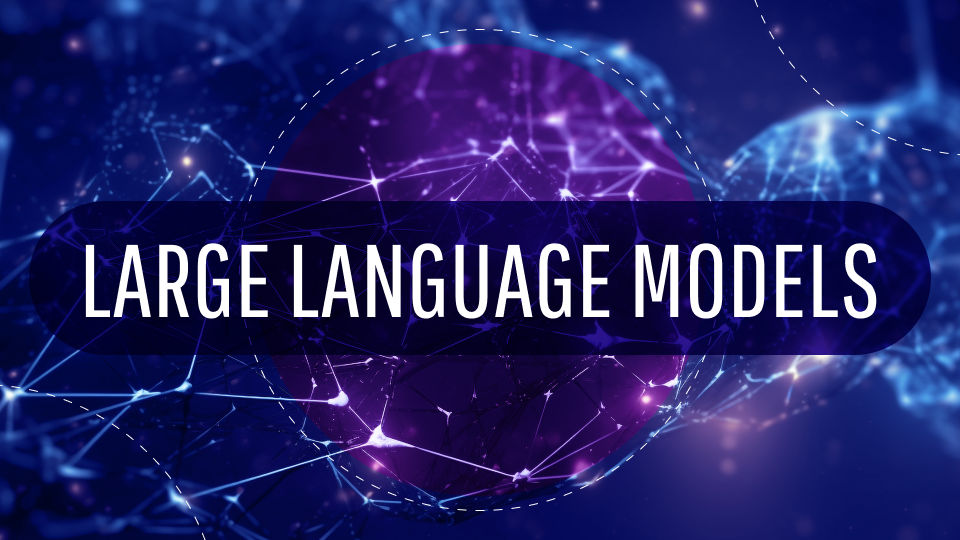Key points:
The real blockers for enterprise AI automation aren’t AI models. They’re siloed systems, compliance/audit demands, and brittle manual processes.
“Quick LLM add-ons” fail at scale: no session isolation, weak audit trails, compliance blind spots, and fragile reliability.
Amazon Bedrock AgentCore provides secure, scalable, production-ready agents so teams can focus on business logic instead of manually fixing errors.
Benefits: faster delivery, elastic scale, least-privilege security with IAM, built-in auditability, and lower ops overhead.
Real-world adopters include banking, healthcare, and marketing companies — signaling enterprise readiness.
Geniusee has already implemented AgentCore in real projects and can help your organization adopt it safely and quickly.
Running AI agents at enterprise scale can feel like a hurdle race. Spinning up an LLM-powered tool for one department is relatively achievable; scaling it across regions, meeting strict security baselines, and passing audits is where things fall apart. You fix one integration and another breaks, security flags pile up, and your CTO loses sleep.
At an enterprise level, “adding AI” would usually mean gluing an LLM to one workflow and generating lots of errors in the meantime. A simple change in a web-page layout, like the “Issue refund” button moves into a dropdown, and the bot clicks “Cancel order” instead. Or a supplier portal adds a new “reference” field; the bot posts totals into the wrong box, and here you are having troubles with tax reporting.
Companies worldwide require a better way to deal with automation that is both scalable and compliant. In response, a new class of platforms has emerged to run enterprise-grade AI agents without the duct tape, such as the recently introduced Amazon Bedrock AgentCore, which puts all the pieces under one roof so teams can scale agents with confidence rather than watching everything fall apart.
What is Amazon Bedrock AgentCore?
Amazon Bedrock AgentCore is a modular foundation for building, deploying, and operating enterprise-grade AI agents. It basically removes the “scaffolding tax,” the hidden time and cost you pay to build all the non-feature plumbing around an AI agent before it can run safely in production.
As Vice President for Agentic AI at Amazon Web Services, Swami Sivasubramanian noted at AWS Summit New York 2025, “AgentCore provides a secure, serverless runtime with complete session isolation and the longest running workload available today.”
Also, Amazon spotlighted expanded agent listings in AWS Marketplace, alongside an additional $100M investment in the AWS Generative AI Innovation Center to accelerate enterprise adoption — clear signals that governed, at-scale agents are now a first-class priority.
At Geniusee, we’ve already battle-tested AgentCore on real projects and seen the impact. In this article, we’ll show how it helps you launch AI agents securely, at scale, and audit-ready.
AgentCore’s impact on enterprise automation
Before Amazon brought AgentCore to market, enterprise automation often felt like an endless exercise in patching technology gaps. Companies relied on point scripts and ad-hoc connectors instead of a unified, governed platform, and corporate “agents” ran on custom scaffolding and temporary fixes that couldn’t withstand scale. Some of the most problematic areas would look like this:
Siloed systems. Critical data and actions live across CRMs, ERPs, data lakes, and legacy apps, each with different auth and network rules. Example: a support workflow needs order history (ERP), warranty status (PLM), and refund approval (finance system), but nothing talks to each other cleanly.
Compliance risks. Teams must prove who accessed what, under which policy, and why — often across regions with GDPR/industry controls. Example: a marketing bot pulls PII from a CMS and sends it to a third-party API without masking or a recorded legal basis.
Manual, brittle processes. Copying/pasting across tools, ad-hoc scripts, and email approvals slows response times and creates hidden failure points. Example: incident responders cross-check CloudWatch, Jira, and Slack by hand, so root cause and SLA evidence are hard to reconstruct.
Attempts to bolt assorted AI tools onto disparate business processes didn’t deliver the desired results either. The core issues stayed unresolved and kept causing failures across workflows. Below are the pain points that proved most disruptive:
No session isolation and weak audit trail. One bot handles many users with shared context and sparse logs. When a regulator asks, “Who changed this policy and why?” you can’t reconstruct the sequence or prove least-privilege access.
Compliance blind spots. Hard-coded keys and opaque prompts pass IDs, medical notes, or financial data to LLM APIs without documented controls, retention, or redaction, thus creating GDPR/HIPAA exposure.
Fragile scalability. Pilots collapse under load-rate limits, timeouts, and lost context because there’s no standardized retry/backoff, queueing, or support for long-running sessions.
Then AgentCore arrived and closed those gaps. It bakes in security (per-session isolation and least-privilege access), scales elastically, and runs production workloads for thousands of concurrent users. Here are some of the key strengths that set AgentCore apart from earlier approaches:
Runtime. Per-session isolation contains data to the user/task and standardizes lifecycle, retries, and long-running executions, so spikes don’t corrupt state or leak context.
Identity and gateway. Least-privilege credentials and governed tool calls to internal/SaaS APIs replace shared keys and ad-hoc integrations, providing clear “who did what, under which policy” records.
Memory and observability. Durable context eliminates custom memory plumbing; end-to-end traces, logs, and metrics provide searchable evidence for audits and faster incident triage, turning one-off bots into operable systems across teams.
Modular by design, each AgentCore key component has a specific job, for example:
Runtime: hosts agent or tool code; each user session runs in an isolated microVM with ephemeral state.
Memory: provides a durable context so sessions can be stateless yet informed.
Identity: manages secure access to AWS resources and third-party tools under least-privilege.
Together, these pieces turn agents from isolated experiments into systems you can operate alongside critical workloads — securely, repeatably, and at scale.
Think of Amazon Bedrock AgentCore as serverless for agents: just as Lambda removed server provisioning and autoscaling from app teams, AgentCore abstracts session management, context, tool access, and telemetry so you ship reliable automations without rebuilding the plumbing every time.
For enterprises pursuing worldwide, large-scale automation, the new Amazon platform delivers a new level of possibilities. And thanks to its inner advantages, this technology frees team resources that would previously be wasted on mundane error fixing. So why do companies consider it a viable option?
Benefits of deployment on AgentCore

Running automation on AgentCore isn’t just about plugging into another AWS service. It’s about removing the dead weight that keeps enterprise AI stuck in pilots and proofs of concept. By shifting the scaffolding work into the platform, AgentCore clears the runway for teams to ship real features, scale across workloads, and stay compliant without slowing down. And here's how:
Speed and productivity
Cut the boilerplate. AgentCore hands you Runtime, Memory, Identity, Gateway, and Observability out of the box, so you’re not wiring sessions, context stores, auth, and logs by hand.
Build the thing, not the scaffolding. More time on features, less time on setup. Prototypes land in days, and moving to production is a straight path, not a rewrite.
Scalability
No capacity math. Serverless execution flexes with demand, and per-session isolation keeps workstreams from stepping on each other.
Bring your own stack. Use the frameworks and models your teams prefer — inside or outside Bedrock — and still run on one platform.
Security and compliance
Least-privilege by default. Short-lived credentials and IAM-aligned policies scope every tool call, so agents only touch what they’re allowed to, and you can prove it.
See every step. Traces and logs stream into CloudWatch, making it easy to replay an agent’s actions during investigations or audits.
Cost-efficiency
Less busywork, fewer fire drills. With scaling and core services managed for you, your team isn’t babysitting servers or patching glue scripts.
Reuse beats rebuild. The same identity, memory, and observability patterns apply across projects, so you don’t pay (in time or headcount) to solve the same problems five different ways.
In short, here’s the key difference between the old ways of AI automation and what Amazon is proposing.
Traditional vs. AgentCore AI agent deployment
Traditional AI agents deploying | Deploying with AgentCore |
|
|
Let’s say the advantages are more or less clear. But the platform is so new that it was just presented recently. How do you judge if it is efficient in the real world? The best signal is where it’s already working today. Let’s have a closer look at the business processes where Amazon Bedrock AgentCore is being applied in practice.


Thank you for Subscription!
5 examples of AgentCore use cases
AgentCore isn’t limited to one department or a single type of workflow. Because Runtime, Identity, Memory, Gateway, and Observability are baked in, the same foundation can serve very different enterprise needs:
Customer support automation
An agent triages tickets/chats, pulls order and billing data, and drafts responses or actions (e.g., create RMA, issue refund). AgentCore’s Runtime isolates each conversation, Gateway exposes CRM/ERP as governed tools, and Identity enforces least-privilege access; Memory and Observability keep context and a clean audit trail.
IT and infrastructure management
An ops agent triggers Lambda runbooks to scale clusters, rotate keys, or patch instances, calling AWS services through Gateway as governed tools. Identity enforces least-privilege, short-lived access for each action, and Observability records a step-by-step trace, delivering clear compliance and accountability.
Finance and compliance workflows
Agents generate period-close reports, validate entries against policies, and route approvals. Identity enforces least-privilege, short-lived access for every step, while Observability logs a full trace for audit-ready evidence.
RPA-like web interactions
Least privilege keeps RPA-style agents safe: each session gets only the exact permissions it needs. Identity issues are short-lived, scoped roles, and Gateway limits agents to approved tools/APIs, so even off-script actions have a tiny blast radius.
Personalized marketing and content automation
Agents turn audience data into action-building segments, assembling on-brand content and launching journeys across email, mobile, and web. Teams move faster on briefs and A/B tests. Epsilon reports they expect up to a 30% reduction in campaign build times using AgentCore.
Are there really enterprises brave enough to roll out a brand-new platform across the business? Yes, and not just in one niche. Early adopters are already piloting and scaling AgentCore, using it to personalize customer experiences, standardize compliant data access, and run secure, production-grade agents over vast content estates. Here are a few representative examples.

Related
How Geniusee helped Forsyth Barnes speed up hiring by up to 90% with Imagine AI
Explore how we built the system that reshaped recruiters’ daily routines by centralizing workflows and applying AI agents to candidate matching, CV tailoring, and content generation.
Check out our caseReal-world companies utilizing AgentCore
AgentCore has moved quickly from announcement to adoption. Enterprises that can’t afford risky experiments, such as banks and healthcare providers, are already testing it in production to solve real-world problems. And here are some examples.
Finance: Itaú Unibanco
Latin America’s largest bank is using AgentCore to advance hyper-personalized, secure digital banking, bringing agentic AI into customer experiences while staying within strict regulatory controls.
Healthcare: Innovaccer
The company is building Healthcare Model Context Protocol on AgentCore Gateway to automatically convert its healthcare APIs into MCP-compatible tools.
Content management: Box
Box is deploying agents on the AgentCore Runtime (using Strands Agents) to scale AI across enterprise content while preserving “top-tier security and compliance.”
By now, you’ve seen what the new platform can do, how it compares to older approaches, and where it’s already working. The only question that might be left about Amazon Bedrock AgentCore is …
What’s in it for you?
If you’re considering adopting the brand-new Amazon Bedrock AgentCore, Geniusee is a trusted, already-experienced partner to de-risk pilots, accelerate production rollout, and empower your teams.
We engineer for scale and safety with least-privilege IAM, VPC/PrivateLink boundaries, built-in data governance, and SLO/SLI reliability proven in regulated environments.
Our experts provide end-to-end consulting and development for enterprise AI automation, as well as hands-on experience with real-world clients implementing the new technology with us.
Conclusion
Amazon Bedrock AgentCore closes the gap between promising AI prototypes and enterprise-grade automation by providing a secure, scalable operational layer for agents. With standardized runtime, identity, memory, and observability, teams can focus on outcomes instead of rebuilding plumbing.
If you’re ready to move from pilots to production, explore Geniusee’s AI-powered app development and generative AI consulting — we’ll help you chart the roadmap and deliver results.





















